Abstract
Alkaline phosphatase-labelled F(ab')2 polyvalent anti-human immunoglobulin stained a mean of 12% (s.d. 4.2) of lymphocytes in the whole peripheral blood of 15 normal individuals. However, when the sensitivity of detection of the bound anti-immunoglobulin reagent was enhanced by adding complexes of alkaline phosphatase with F(ab')2 anti-alkaline phosphatase, a mean of 22.1% (s.d. 7.8) of lymphocytes were positive. The mean number of T lymphocytes demonstrated in the same blood samples using a monoclonal anti-T lymphocyte antibody (OKT3) was 78% (s.d. 4.1) and was not increased by immunoenzyme enhancement. In five individuals the blood was washed at 37 degrees C to remove passively adsorbed IgG and was then studied using the enhanced method together with monoclonal anti-kappa and anti-lambda antibodies. The mean +/- s.d. number of kappa-positive lymphocytes was 15.5 +/- 4.6% and lambda-positive was 7.9 +/- 1.1%. The sum of these was the same as the number of cells stained either with anti-kappa and anti-lambda together or with the conventional polyvalent anti-immunoglobulin, confirming that the enhancement procedure was detecting integral membrane immunoglobulin and not passively adsorbed IgG. Application to the same blood sample of both the anti-T cell antibody and the enhancement procedure with polyvalent anti-immunoglobulin stained 99-100% of lymphocytes. The present observations confirm that there are two populations among the B-lymphocytes, the B-major cells with readily demonstrable surface immunoglobulin and the B-minor cells on which surface immunoglobulin is demonstrable only by very sensitive techniques (Haegert & Coombs, 1979). The B-major and B-minor cells together account for all the non-T lymphocytes and there are virtually no so-called 'null' cells in normal peripheral blood. These findings have significant implications for the use of surface membrane immunoglobulin as a marker in the typing of normal and abnormal lymphocyte populations.
Full text
PDF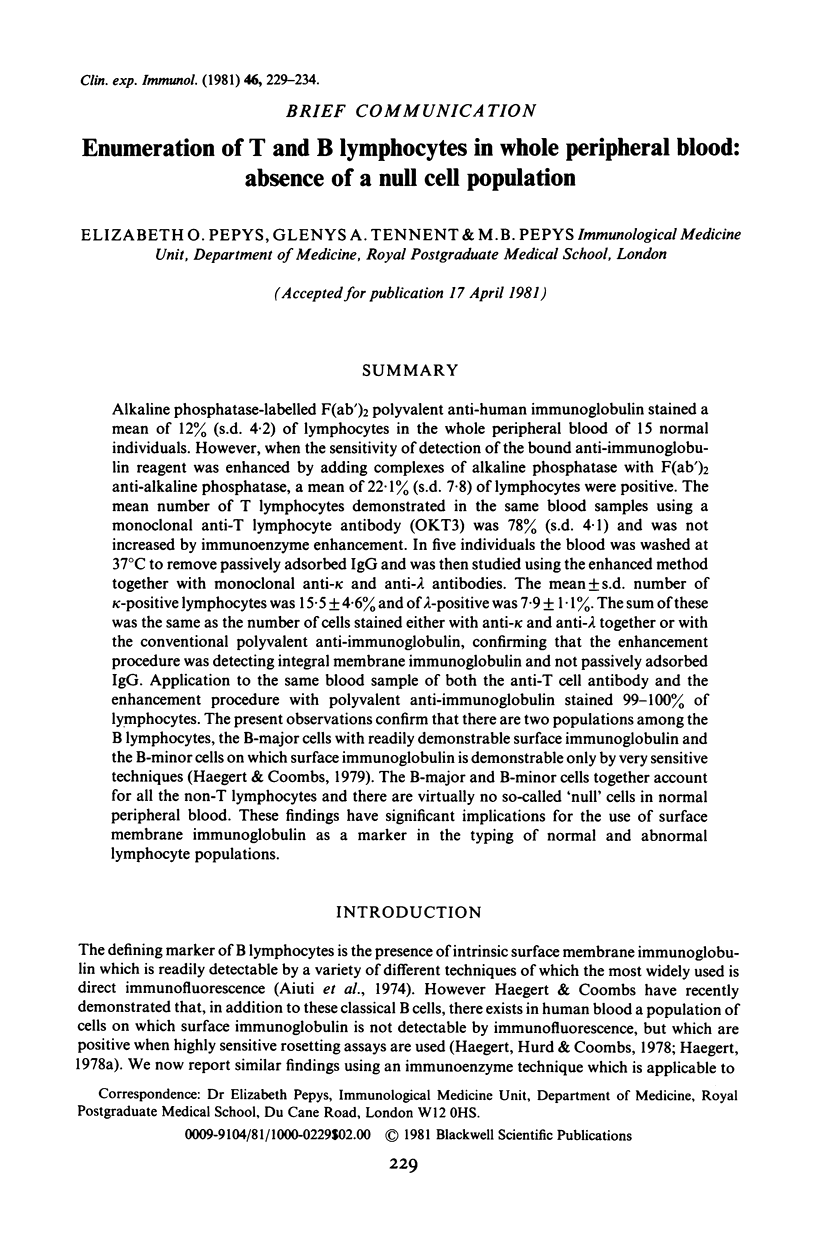
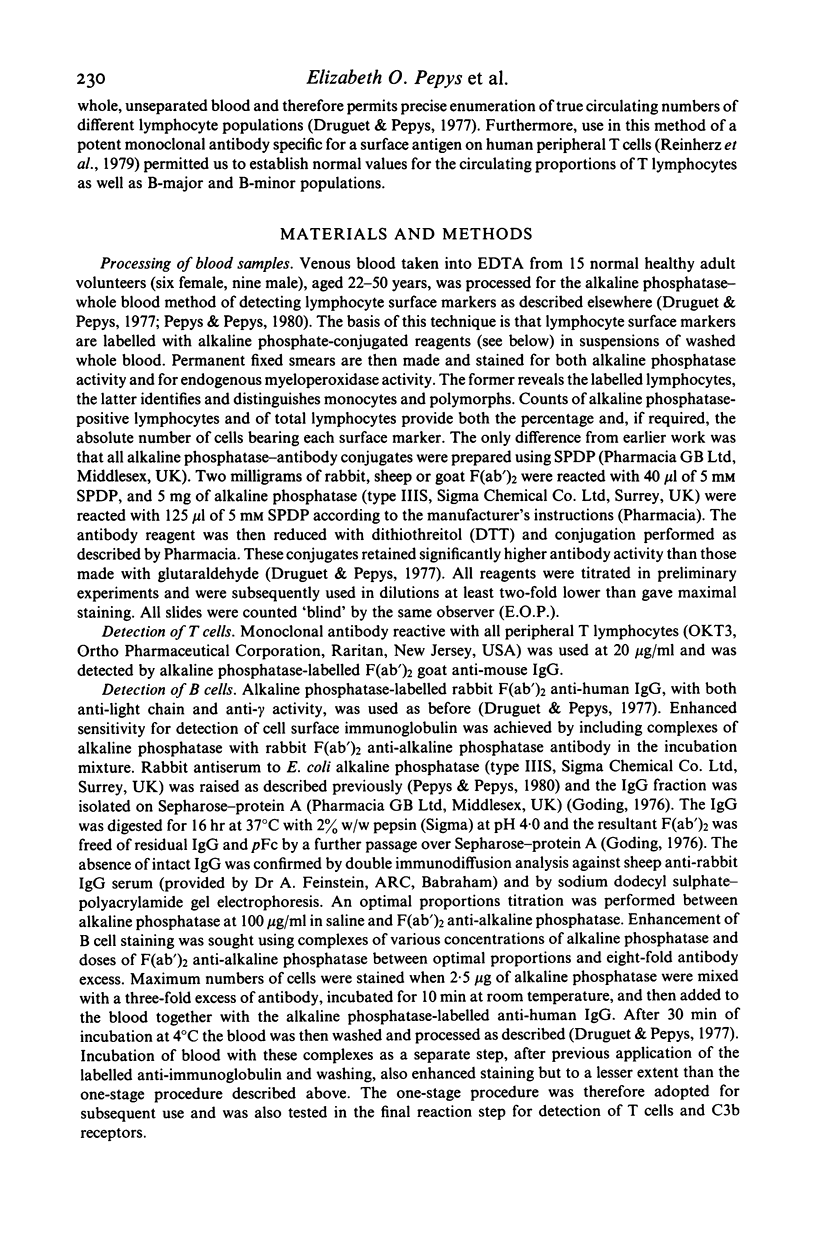
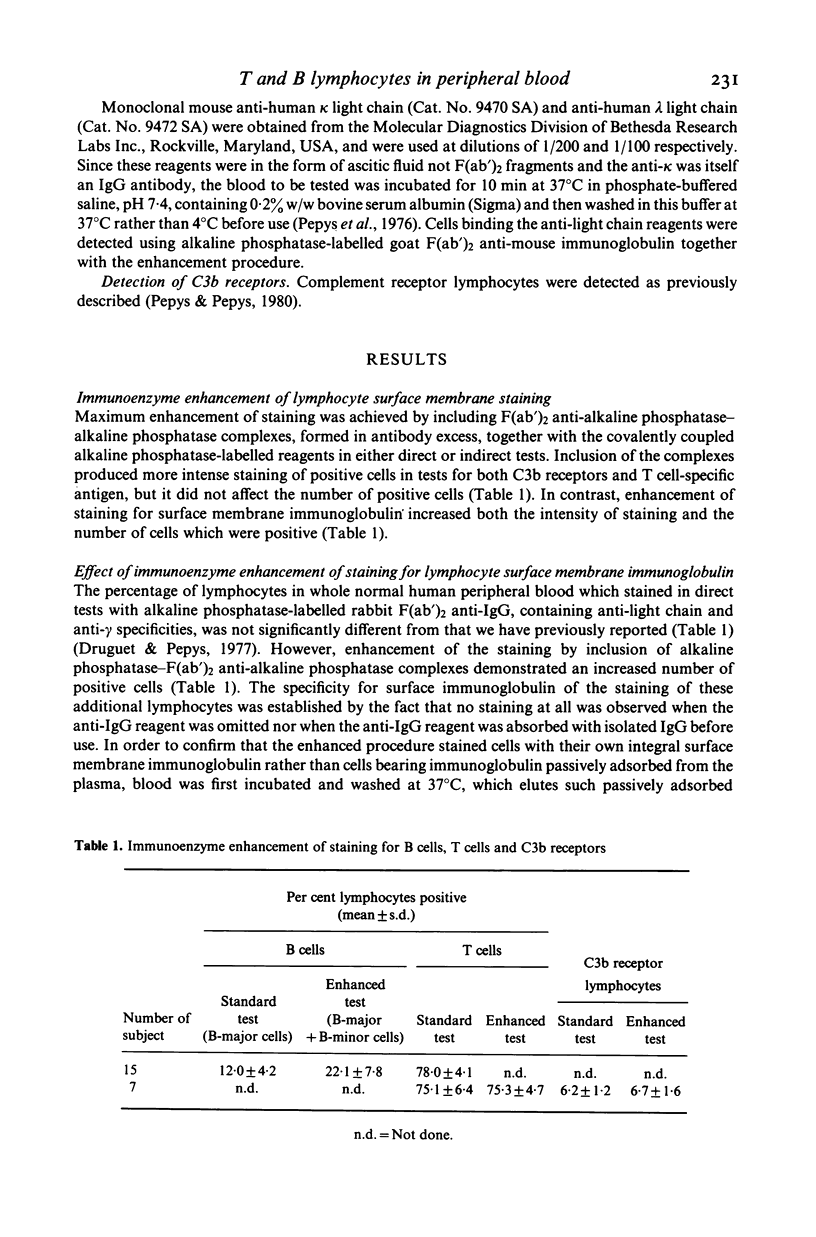
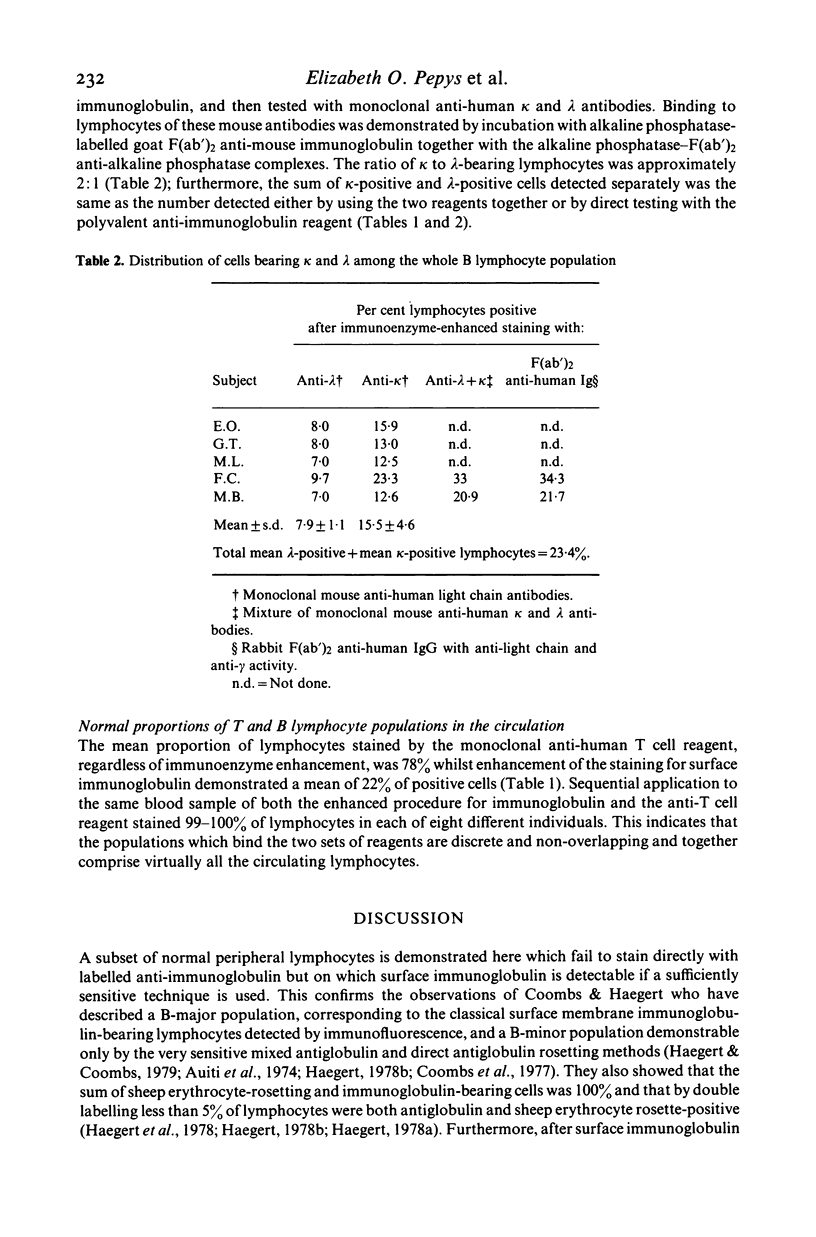
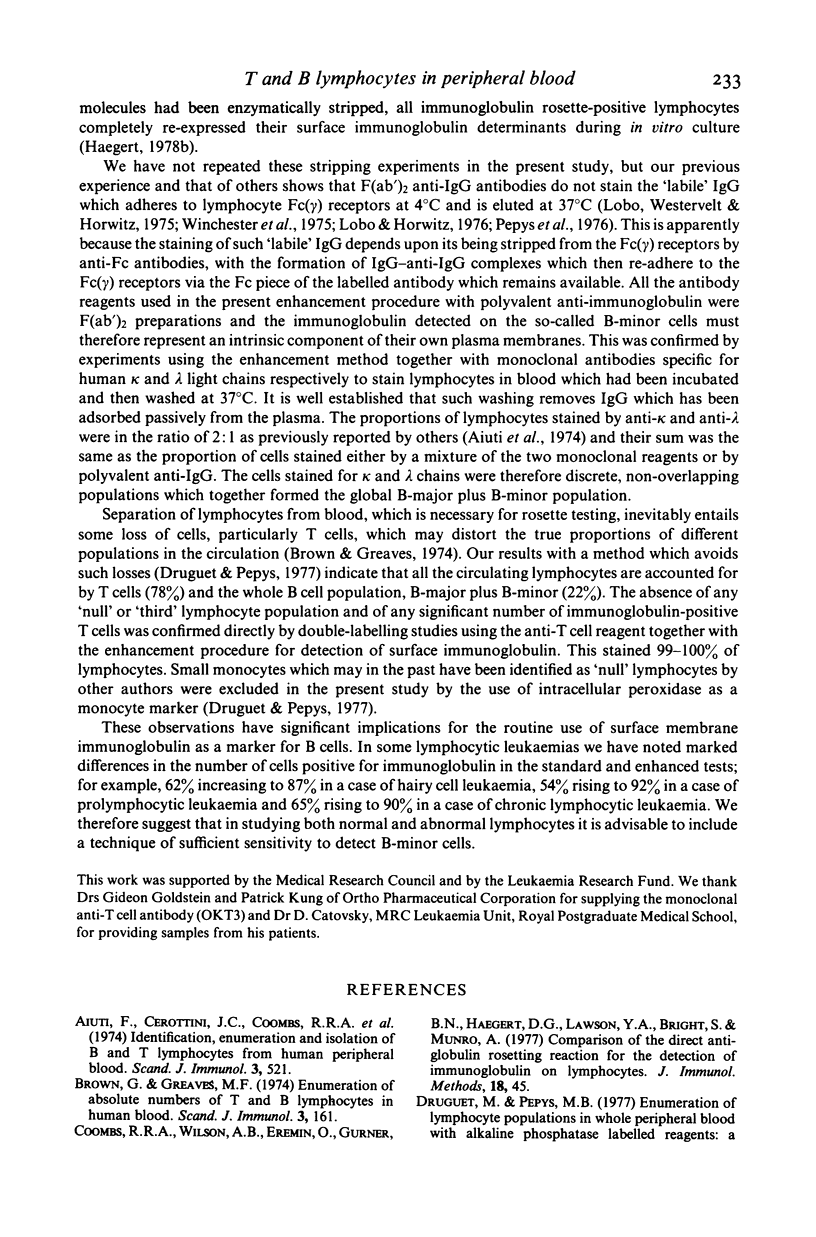
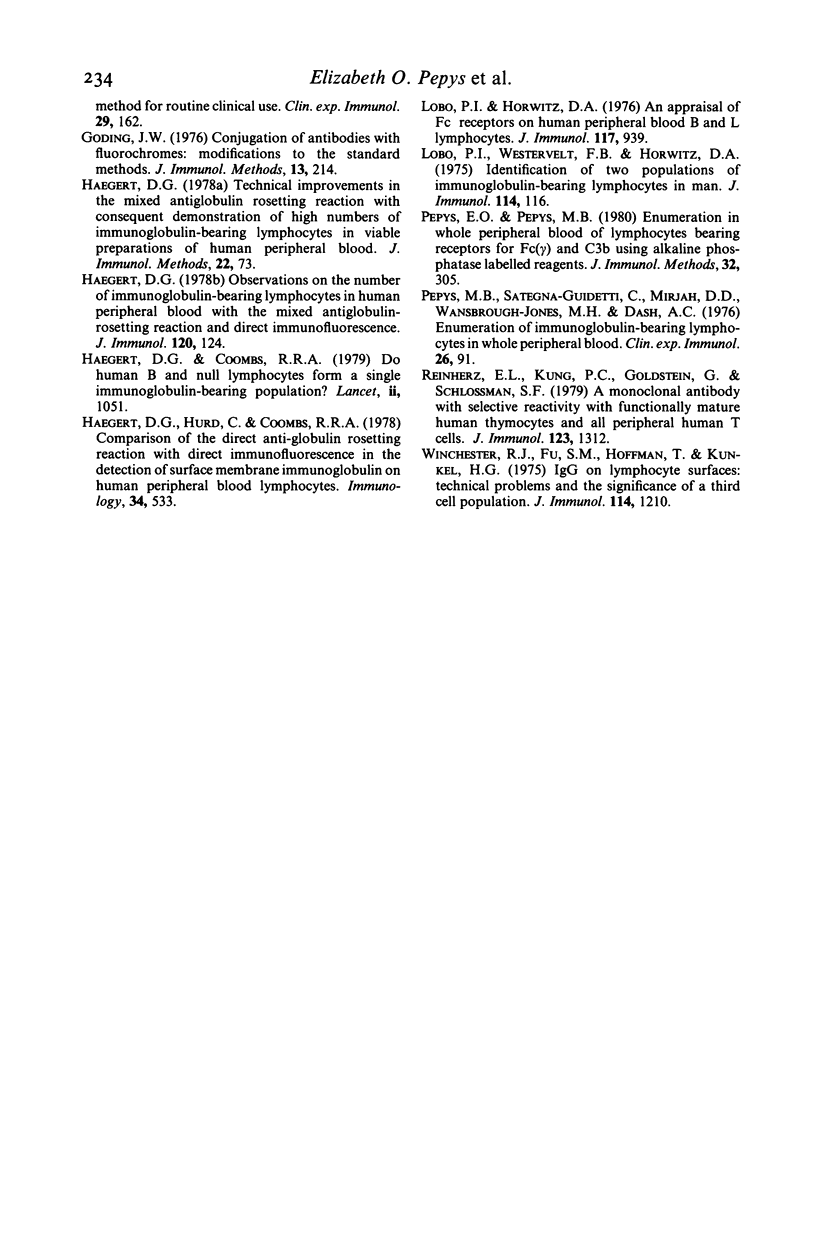
Selected References
These references are in PubMed. This may not be the complete list of references from this article.
- Brown G., Greaves M. F. Enumeration of absolute numbers of T and B lymphocytes in human blood. Scand J Immunol. 1974;3(2):161–172. doi: 10.1111/j.1365-3083.1974.tb01244.x. [DOI] [PubMed] [Google Scholar]
- Coombs R. R., Wilson A. B., Eremin O., Gurner B. W., Haegert D. G., Lawson Y. A., Bright S., Munro A. J. Comparison of the direct antiglobulin rosetting reaction with the mixed antiglobulin rosetting reaction for the detection of immunoglobulin on lymphocytes. J Immunol Methods. 1977;18(1-2):45–54. doi: 10.1016/0022-1759(77)90157-0. [DOI] [PubMed] [Google Scholar]
- Druguet M., Pepys M. B. Enumeration of lymphocyte populations in whole peripheral blood with alkaline phosphatase-labelled reagents. A method for routine clinical use. Clin Exp Immunol. 1977 Jul;29(1):162–167. [PMC free article] [PubMed] [Google Scholar]
- Haegert D. G., Coombs R. R. Do human B and null lymphocytes form a single immunoglobulin-bearing population? Lancet. 1979 Nov 17;2(8151):1051–1053. doi: 10.1016/s0140-6736(79)92446-2. [DOI] [PubMed] [Google Scholar]
- Haegert D. G., Hurd C., Coombs R. R. Comparison of the direct antiglobulin rosetting reaction with direct immunofluorescence in the detection of surface membrane immunoglobulin on human peripheral blood lymphocytes. Immunology. 1978 Mar;34(3):533–538. [PMC free article] [PubMed] [Google Scholar]
- Haegert D. G. Observations on the number of immunoglobulin-bearing lymphocytes in human peripheral blood with the mixed antiglobulin-rosetting reaction and direct immunofluorescence. J Immunol. 1978 Jan;120(1):124–129. [PubMed] [Google Scholar]
- Haegert D. G. Technical improvements in the mixed antiglobulin rosetting reaction with consequent demonstration of high numbers of immunoglobulin-bearing lymphocytes in viable preparations of human peripheral blood. J Immunol Methods. 1978;22(1-2):73–81. doi: 10.1016/0022-1759(78)90059-5. [DOI] [PubMed] [Google Scholar]
- Identification, enumeration, and isolation of B and T lymphocytes from human peripheral blood. Report of a WHO-IARC-sponsored workshop on human B and T cells, London, 15-17 July 1974. Scand J Immunol. 1974;3(5):521–532. [PubMed] [Google Scholar]
- Lobo P. I., Horwitz D. A. An appraisal of Fc receptors on human peripheral blood B and L lymphocytes. J Immunol. 1976 Sep;117(3):939–943. [PubMed] [Google Scholar]
- Lobo P. I., Westervelt F. B., Horwitz D. A. Identification of two populations of immunoglobulin-bearing lymphocytes in man. J Immunol. 1975 Jan;114(1 Pt 1):116–119. [PubMed] [Google Scholar]
- Pepys E. O., Pepys M. B. Enumeration in whole peripheral blood of lymphocytes bearing receptors for Fc(gamma) and C3b using alkaline phosphatase-labelled reagents. J Immunol Methods. 1980;32(4):305–314. doi: 10.1016/0022-1759(80)90023-x. [DOI] [PubMed] [Google Scholar]
- Pepys M. B., Sategna-Guidetti C., Mirjah D. D., Wansbrough-Jones M. H., Dash A. C. Enumeration of immunoglobulin-bearing lymphocytes in whole peripheral blood. Clin Exp Immunol. 1976 Oct;26(1):91–94. [PMC free article] [PubMed] [Google Scholar]
- Reinherz E. L., Kung P. C., Goldstein G., Schlossman S. F. A monoclonal antibody with selective reactivity with functionally mature human thymocytes and all peripheral human T cells. J Immunol. 1979 Sep;123(3):1312–1317. [PubMed] [Google Scholar]
- Winchester R. J., Fu S. M., Hoffman T., Kunkel H. G. IgG on lymphocyte surfaces; technical problems and the significance of a third cell population. J Immunol. 1975 Apr;114(4):1210–1212. [PubMed] [Google Scholar]


